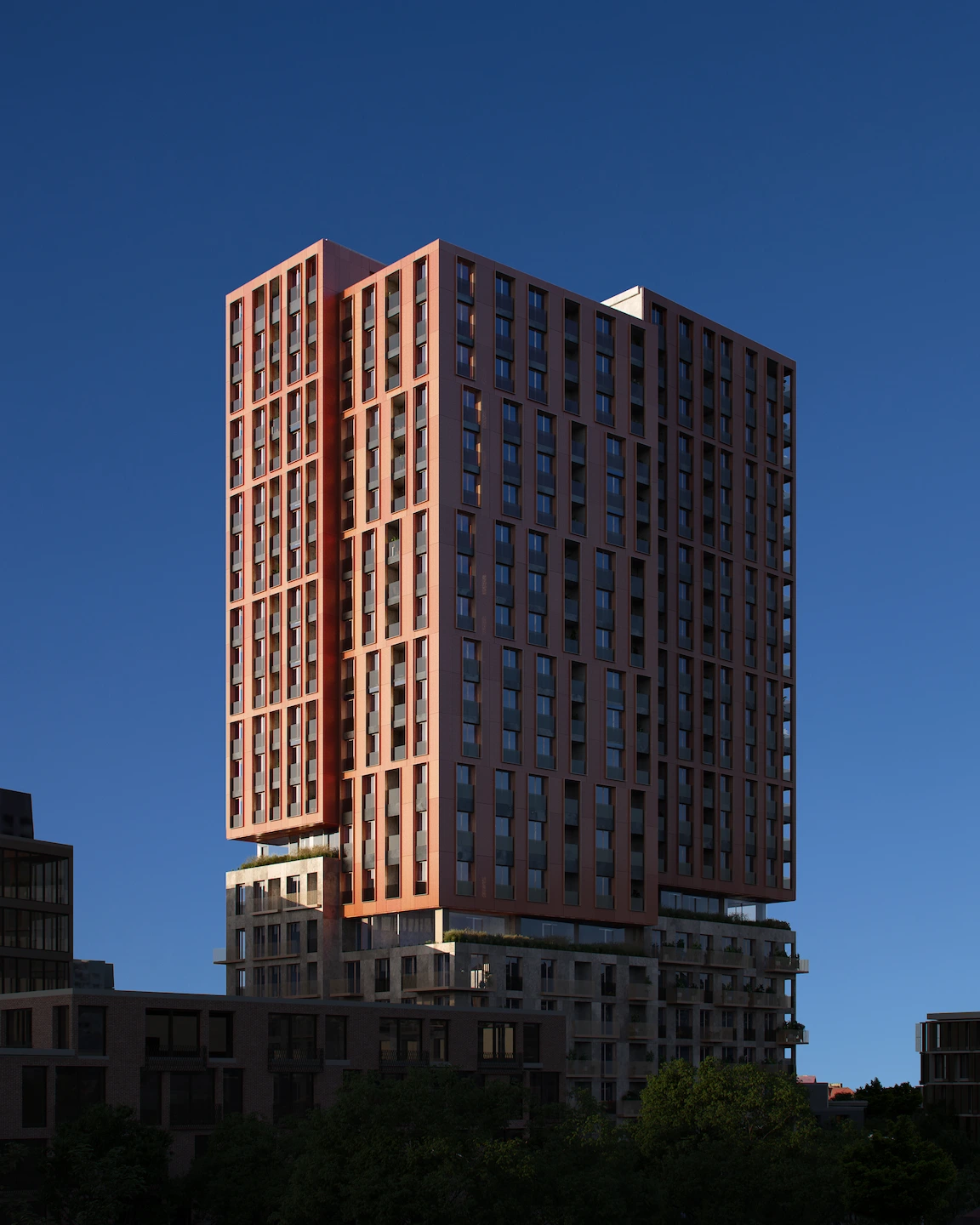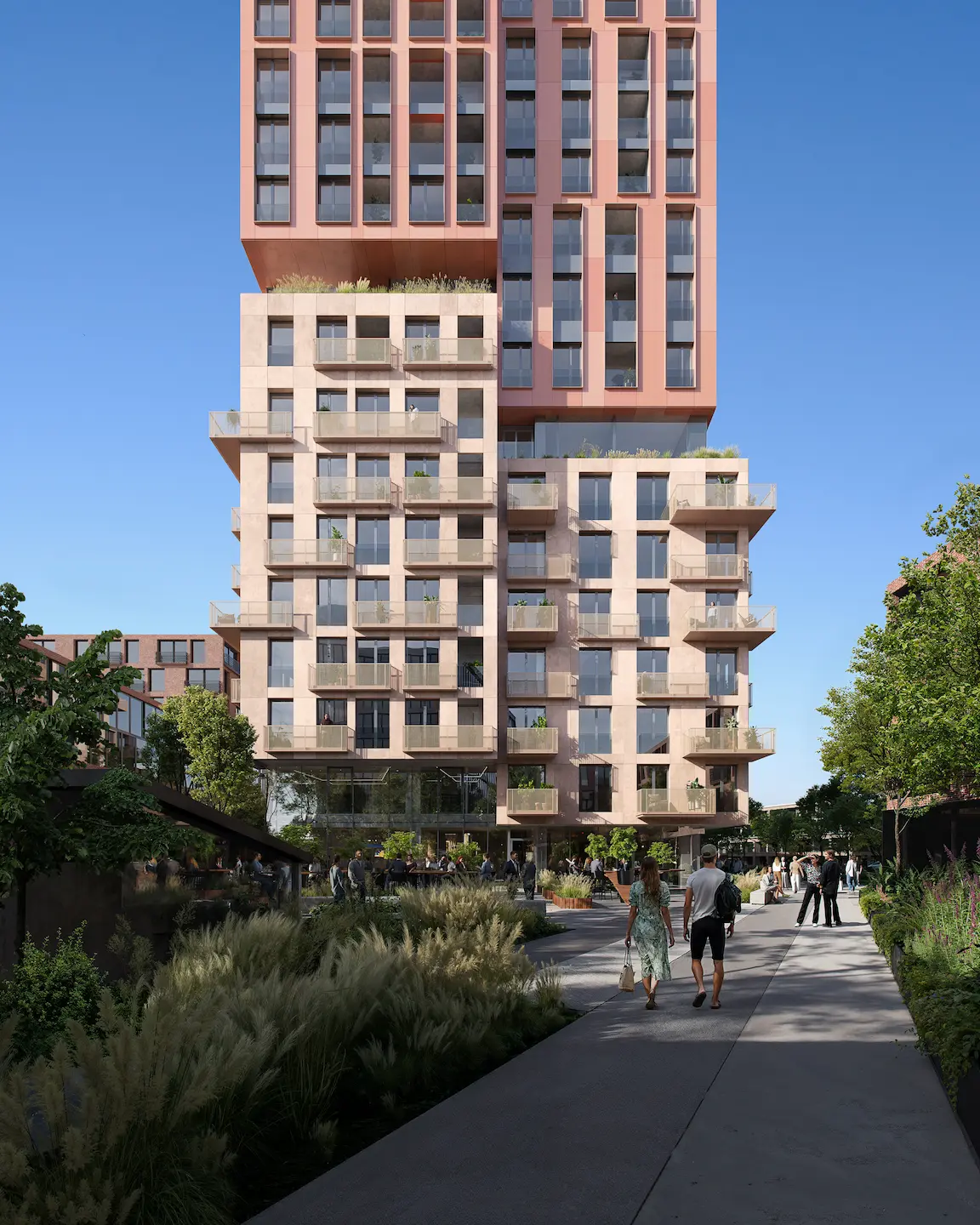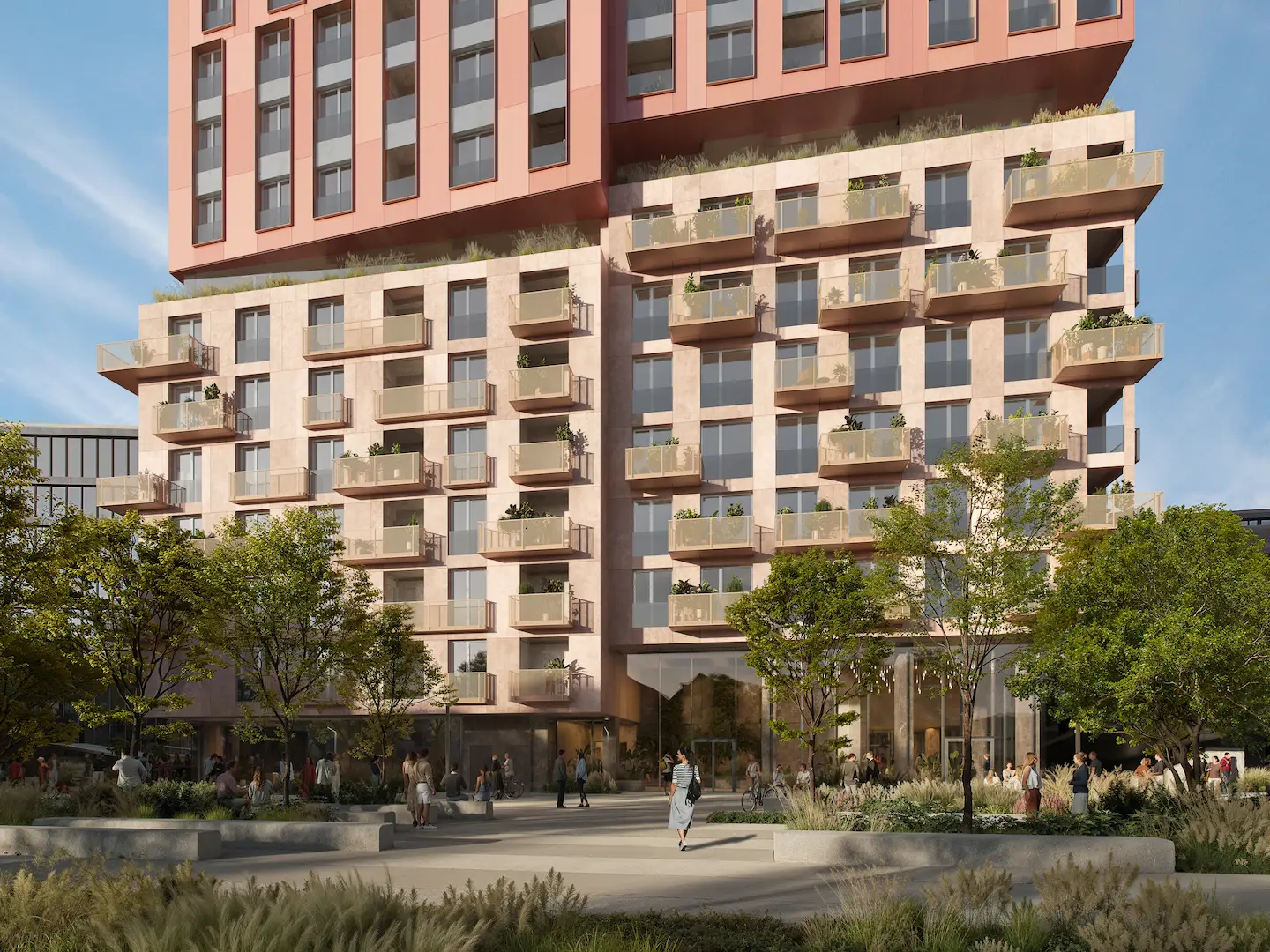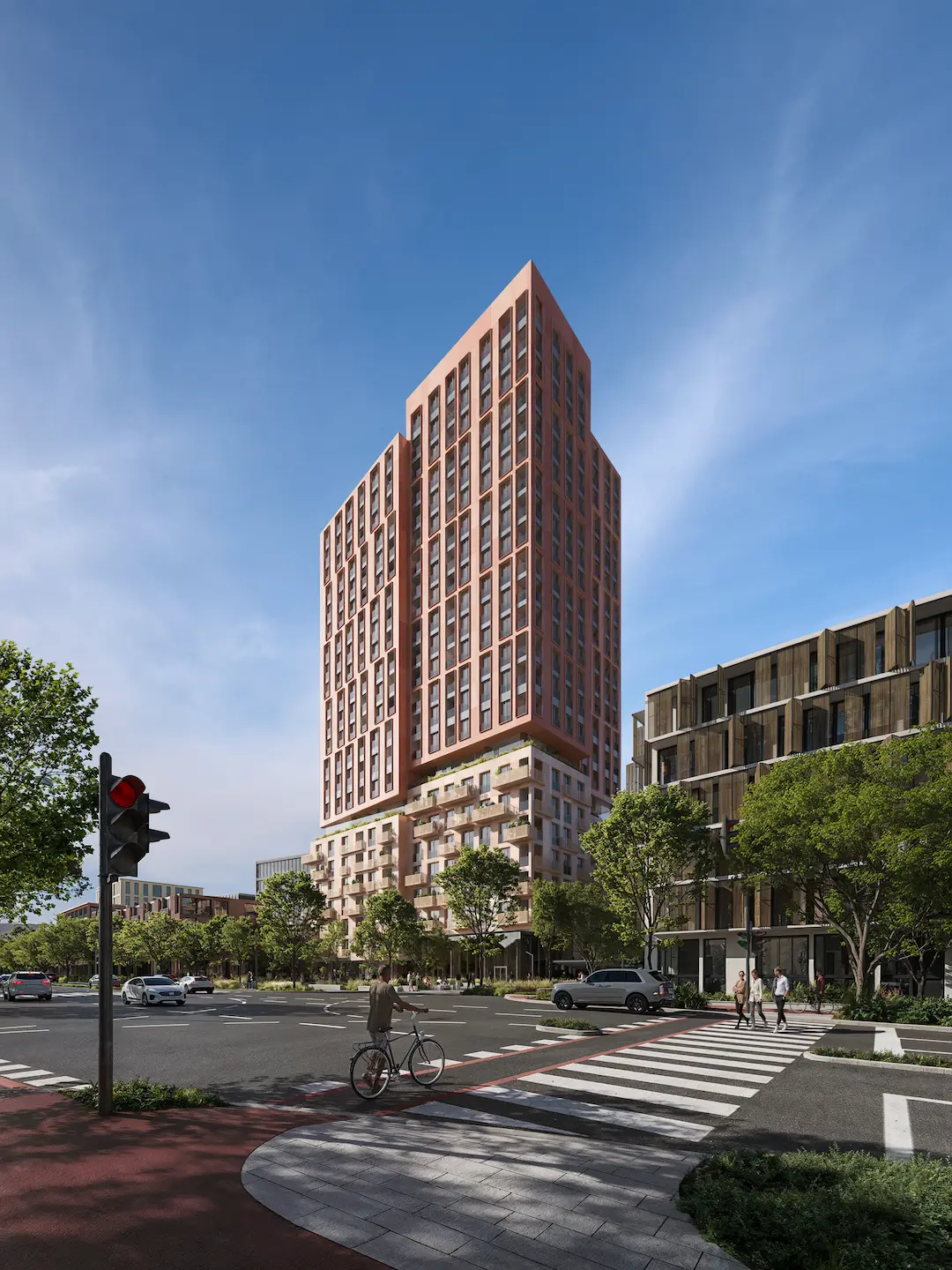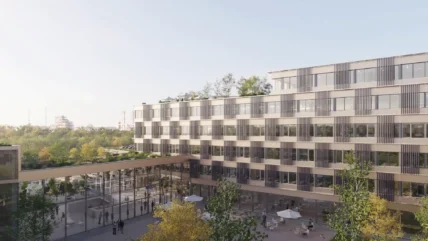Nordika
Case Study in Rendering for Architects Working Across Cultures
Cross‑border investment
Slovak property developer CORWIN has committed to constructing an 82-meter, 23-storey residential tower in Ljubljana, designed by our long-term partner Snøhetta—marking a major cross-border dialogue around this contemporary architectural concept in Slovenia’s capital.
Ljubljana doesn’t build tall—heritage and UNESCO restrictions limit downtown heights. The city’s second-highest building is the Crystal Palace, a shopping center from 2011. So when CORWIN—a developer better known for Prague office blocks—decided to go vertical in Slovenia’s capital, they needed to convince a city that thinks six stories is ambitious.
More than just a tower, Nordika is part of a broader masterplan to revitalize the brownfield area along Masarykova Street into a vibrant, walkable district of housing, public space, and mixed-use buildings.
That’s where we came in. As a leading architectural visualization studio in Europe, we specialize in translating architectural concepts into photorealistic renderings that convince before construction begins.
Architectural diplomacy
Thomas adjusts his laptop screen again in Snøhetta’s office, studying terracotta samples against Ljubljana’s red-roofed panorama. The Nordika project isn’t just another residential tower—it’s architectural diplomacy rendered in eight stacked volumes. Each block is subtly different, like siblings who share DNA but have developed their own personalities. The real challenge was capturing Ljubljana’s particular light—soft yet weighty, with a warmth that deepens the tones of clay and stone.
Mid‑process, Snøhetta called a six‑month pause for value engineering. But pause didn’t mean stop—it meant refinement: stripping down to its core DNA of eight distinctive volumes. The terracotta façade system remained but was simplified. What emerged wasn’t compromise—it was clarity.
We used the intermission to perfect our visualization package as well. Our obsessive attention to Ljubljana’s atmospheric conditions and the way light behaves on Central European façades was key throughout the project. Every render was crafted to translate Snøhetta’s design language and make it speak Ljubljana’s visual dialect.
Ljubljana’s visual dialect
The restart proved that good architecture, like good wine, benefits from patience. When Nordika finally rises in 2026, it will carry the wisdom of its pause—leaner, more focused, more itself. In an industry obsessed with speed, the project demonstrates that sometimes the most radical act is simply waiting for the design to find its true form.
Collaborating with Snøhetta, we discovered something unexpected: the power of the “back-brief.” This reverse-engineering of their architectural intentions became a mirror, reflecting not just what they wanted to build, but why. Our 68-page document evolved into a manifesto for thoughtful visualization. Every camera angle, every material choice, every shadow cast was interrogated for meaning—the kind of specificity that makes 3D rendering services for architects feel inhabited rather than staged.
Honoring local DNA
When construction begins in 2026, Ljubljana will gain more than square meters—it will gain a model for global creative synergy honoring local DNA while pushing urban boundaries. The tower’s terracotta skin will weather and patina, becoming more beautiful with time, much like the city it now calls home.
Snøhetta’s bet is that Slovenia’s capital is ready for this kind of density. The renderings suggest they might be right.
It’s a curious experiment in cross-border creative collaboration—Slovak capital funding Norwegian architecture, visualized by a Hungarian rendering studio, all to convince Slovenians to live differently.
When the global architecture industry works, it works like this: ideas flowing across borders, each country contributing what it does best.

